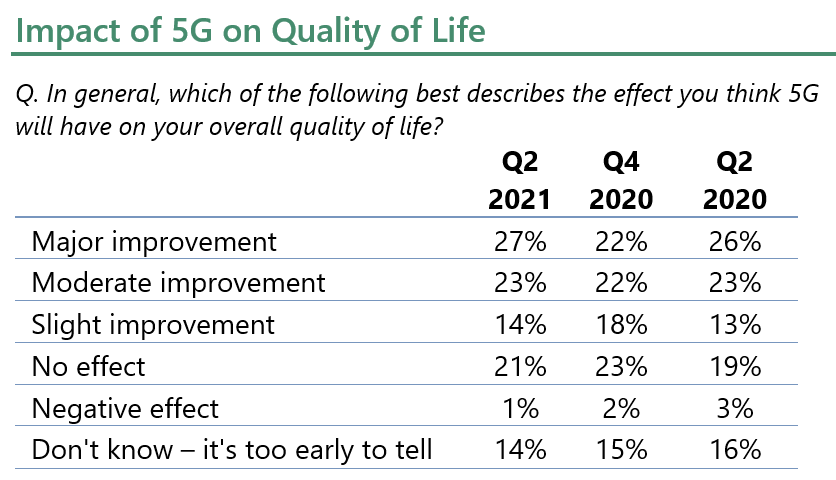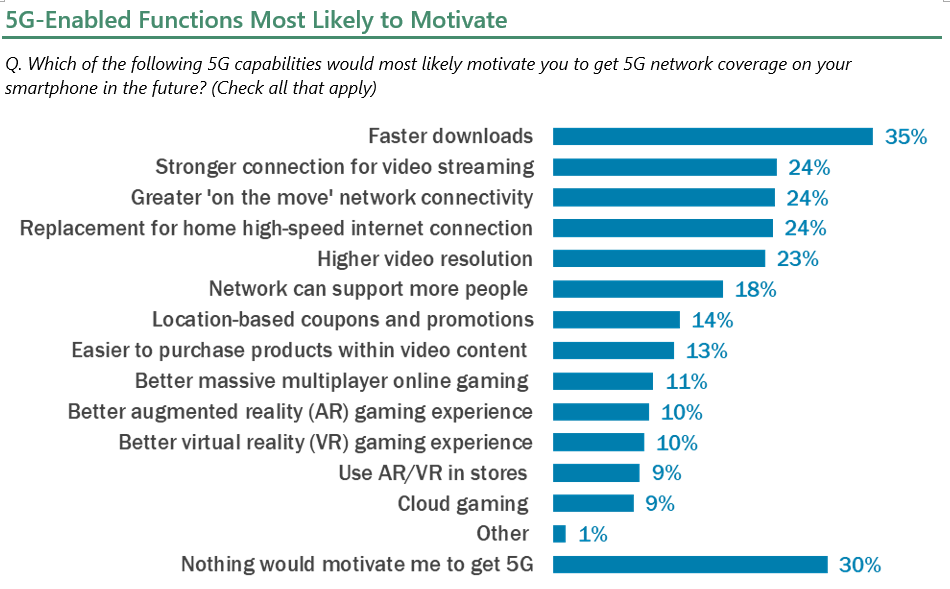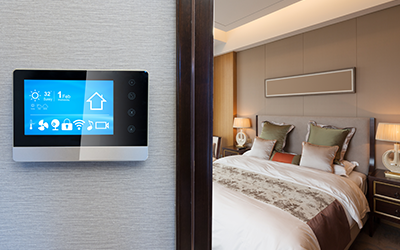
Consumers can scarcely go to a commercial break without seeing a 5G commercial, either from service providers like T-Mobile and Verizon, or smartphone manufacturers like Apple and Samsung. With the constant bombardment, one would think everyone within earshot would know what 5G is and how it will benefit them.
Well, the 451 Alliance’s Q2 2021 connected customer survey on fifth-generation (5G) wireless networks begs to differ. The results indicate that while overall awareness of 5G has improved compared to the previous survey, understanding of its potential positive impact has stagnated.
In the current survey, 57% of respondents said they know most/all or some of 5G’s capabilities over 4G/LTE services – a 4-point improvement over the Q4 2020 survey. Yet expectations based on their current understanding of and experience with 5G capabilities are moving at a slower pace, with half of respondents believing it will have a major (27%) or moderate (23%) positive effect on the overall quality of their daily lives. This sentiment has bounced back after slipping in Q4, but is only moderately better than a year ago in Q2 2020.

At this point, it’s safe to say that consumers on the whole have a general sense that 5G will be better than 4G/LTE and that they should upgrade to 5G services and phones as they become eligible. Yet as we have explored in previous articles, it is still too early for consumers to truly understand what new 5G-enabled services will become major components of daily life, if any.
It’s likely that many of the immediate improvements brought on by 5G will be related to network speed, capacity and responsiveness that will enhance the performance of services consumers currently use and most of the more revolutionary changes will be on the corporate side that will then take time to trickle down to the consumer market. Some of this uncertainty continues to come through when we asked respondents about potential functionalities 5G would enable. The top answer choice was still ‘don’t know’ (33%).
Among actual functionalities that were selected, the top choices were ‘receive better broadband service/coverage in rural areas‘ (29%) and ‘work from anywhere‘ (25%). They were also the top two choices in the two previous surveys, and reinforce an expectation that 5G will deliver on the promise of greater mobility.
Interestingly, ‘using 5G-enabled augmented reality (AR) to gain information about your surroundings’ (19%) has jumped up in consumer expectations. Combined with the next two choices – ‘improve public safety by reporting unsafe conditions‘ (18%) and ‘remotely control devices far away from you in real-time using 5G’ (18%) – and the results show consumers are at least picking up on some of the most commonly discussed applications of 5G, which coincidentally are great applications of advanced technologies like edge computing and IoT that are accessible in a way that (hopefully) helps consumers better understand the practicality of these technologies in their lives.
We then asked respondents what capabilities would motivate them to get 5G coverage in the future, finding ‘faster downloads‘ (35%) as the most desired. This was the top choice in the two previous surveys as well, and shows the baseline practicality consumers need to get out of the new technology. Additionally, cutting down on latency would quell one of the biggest frustrations for mobile data users.

As in the previous survey, the next few choices are bunched together, and highlight the importance and expectation of better mobile entertainment: stronger connection for video streaming (24%), greater ‘on the move’ network connectivity (24%), using 5G as a ‘replacement for home high-speed internet‘ (24%) and higher video resolution (23%). Not only is this the internet-access equivalent of cutting the cord, it also reinforces the fact that consumers are mostly only able to dig into the practical aspects of what 5G could bring that relate to how they currently use their mobile devices.
Want insights on consumer technology trends delivered to your inbox? Join the 451 Alliance.


3 Replies to “Consumers Focused on Practical Improvements 5G Adoption Will Bring”
Comments are closed.